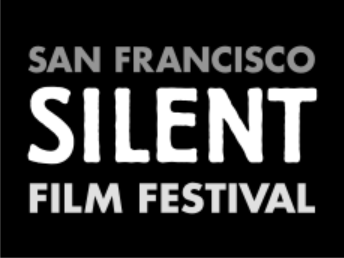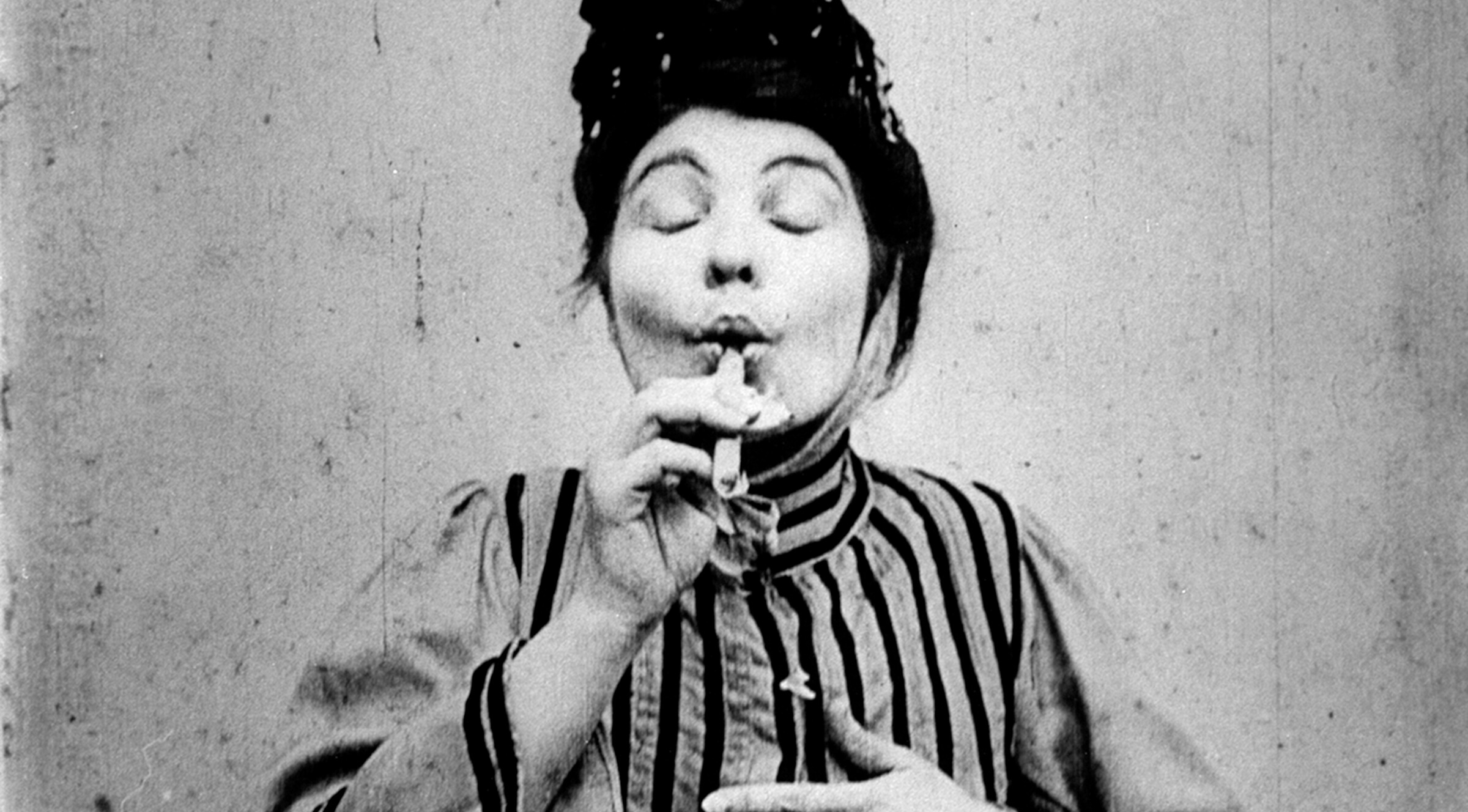When she died in 1968 at ninety-five years old, Alice Guy Blaché believed that all but a handful of her titles were lost. In a career that began at the beginning of movies, Guy had written, produced, and/or directed about a thousand, including one hundred sound films long before talkies. After a divorce from her English husband Herbert Blaché and the shuttering of Solax, their New Jersey production facility (complete with a glass studio, film developing lab, a western town, and a lake), Guy returned to France determined to work again and began to search for her French-made films but found nothing. When she traveled back to the United States in 1927 for her American films, the fifty-four-year-old cinema pioneer came up empty-handed once again. An entire career coinciding with the medium’s first decades down the historical drain pipe. To help earn a badly needed income, she wrote and taught but never made another film.
Guy’s story in cinema begins with the need for a job. In order to support her widowed mother, a teenaged Guy trained on the typewriter, one of the many gadgets to emerge during the late nineteenth century’s flurry of mechanical invention. At her first employer’s she was what we call nowadays sexually harassed and she eventually took a better, less bothersome position at the Comptoire Général de Photographie, where the latest gadgets came in through the door almost daily. Working for Léon Gaumont, whose namesake entity still operates today, Guy encountered a Who’s Who of turn-of-the-century movers and shakers, which included aviator Santos-Dumont, engineer Gustave Eiffel, and Georges Demenÿ with his phonoscope, an early marriage of moving image and sound.
To hawk their photographic inventions, tinkers and entrepreneurs displayed the final products their machines could produce, of the kind that Guy went to see by invitation of the Lumières in March 1895. She recalled the now legendary “demonstration films” as “brief and repetitious” and thought she could do better. “Gathering my courage,” she relayed in her memoirs decades later, “I timidly proposed to Gaumont that I might write one or two little scenes and have a few friends perform in them.” He agreed, as long as it didn’t interfere with her regular duties. She was so successful that Gaumont set her up in a studio, where she ran the whole show, developing a house style that relied in part on an inventiveness born of economy. What follows, along with dance films and travelogues, is the nascent story film: fairy tales, comedies, trick films, adaptations of literature (Faust’s deal with Mephistopheles in two easy minutes, the life and death of Jesus in thirty), satires (like the gleeful farce The Results of Feminism), morality plays, and even films with sound.
In 1907, at age thirty-four, she married and, when Gaumont sent her new husband to Cleveland to promote its sound-film device, Guy gave up her position and followed. The chronophone never caught on (they lived off her dowry and savings) so she returned to directing and producing silent films in the U.S. She was successful enough to build her own studio complex in Fort Lee, New Jersey, supervising its expanse on horseback. She made the transition to feature production, both at Solax and later freelancing. Even as her fortunes declined, her studio in arrears, her husband run off to Los Angeles with an actress, Guy rebounded as a director-for-hire on films such as 1918’s The Great Adventure starring Bessie Love. Louis Feuillade, Ferdinand Zecca, Lois Weber, among many others, all passed through Guy’s studio doors on one continent or the other, exposed to her revolutionary acting philosophy: “Be Natural.”
Behind the scenes, her life was no less exciting. She took paraffin injections to plump up her cheeks in order to improve her appearance on film. She raised a son and daughter, once escaping to Canada to avoid an outbreak of polio. During World War I, she spent time in North Carolina volunteering for the Red Cross and nursing her children through measles. Once in Chicago, one of them was kidnapped for a few hours—kidnapped?!—that’s all we know, except that afterward she bought a handgun for protection. She recovered from the Spanish Flu, a pandemic that claimed up to fifty million lives worldwide, including those of four Solax employees.
Then, she had to write herself back into film history. In his memoir published in 1930, Léon Gaumont omitted everything before 1907, thereby cutting out Guy completely. When Guy wrote asking him not to leave out those years, he agreed for the book’s second edition, which never made it into print. She struck up a correspondence with Gaumont’s son Louis and a subsequent speech he gave about her garnered her some public recognition. After some well-received lectures, Guy began her own memoirs, although they went unpublished until eight years after her death. In 1955, she received the Legion of Honor (Gaumont received his in 1924), and, in 1957, the French Cinémathèque hosted a celebration of her. Now, one hundred years after the end of her career, the enormous scope of her contribution is finally coming to light, with archivists combing through collections, recovering about one-hundred-fifty titles so far and parsing the history to pay her proper due.
Based on “The Life and Times of Alice Guy Blaché” published by Fandor in 2012.
The Films:
MIDWIFE TO THE UPPER CLASS
Midwife to the Upper Class (Sage-femme de Première Class, 1901) is a sardonic variation on the single-shot La Fée aux Choux from 1896 in which a cabbage-patch fairy plucks newborns from the blooms and displays them for the camera. In the two-shot Midwife, a persnickety bourgeois couple visits the cabbage fairy and annoys their way into the “backroom” where infants are cultivated. Guy appears in drag alongside frequent Gaumont players, sisters Yvonne and Germaine Mugnier-Serand. Guy always named La Fée aux Choux as her first film, affirming further that she directed everything on the terrace at Gaumont’s lab in the Belleville neighborhood of Paris. Recent scholarship claims, however, that Midwife is the earliest film for which she can be definitively credited as director. Uncertainty about who did what when at the beginning of cinema is complicated by lost films, sparsely surviving documentation, history’s unfortunate track record of attributing Guy’s films to others, not to mention our modern-day emphasis on roles that were less clearly defined at the time.
THE RESULTS OF FEMINISM
What is known is that Guy was in charge of production at least since Gaumont’s large glass studio went up in 1904, and likely at some point prior. According to set designer Henri Ménessier, she also edited and made the titles for her own films, working “at night when no one else was around.” In the role-reversal comedy The Results of Feminism (Les Résultats du Féminisme, 1906) there’s no cross-dressing (unless you count the flowers pinned in the men’s hair) but the husbands do all the housework and childcare, while the women idle in cafés and chase lovers. In 1912 Guy remade the film at her Solax studio as In the Year 2000.
MADAM HAS HER CRAVINGS
Even as Guy made everything from trick films to period dramas, comedy was her mainstay. In Madam Has Her Cravings(Madame a des Envies, 1906) a pregnant woman turns a Sunday stroll into a rampage to satisfy her appetites. The film is injected with the Continental raciness typical of Guy and, according to film scholar Kim Tomadjoglou, caused her later problems with American censors.
THE DRUNKEN MATTRESS
A stunt-filled delight, The Drunken Mattress (Le Matelas Alcoolique, 1906) features former circus performer Roméo Bosetti (who became a director under Guy) as a drunkard who is accidentally sown up in a mattress then goes tumbling all around Belleville. At Gaumont, Guy developed a knack for keeping settings varied and costs low by shooting on location.
THE GLUE
Also known as Tommy and the Gluepot in the U.S., The Glue (La Glu, 1907) takes a boy’s mischief to sticky extremes as he slathers the adhesive on any inconvenient surface he can find.
THE OCEAN WAIF
At her U.S. studio Guy directed this 1916 feature starring Doris Kenyon and Carlyle Blackwell about an abused orphan in a fishing village who takes refuge at an abandoned estate. Guy had built Solax into a respected brand but by mid-decade the movie business was in flux, with the demand for longer, more elaborate films driving up costs and centralizing the industry already relocating to the West Coast. To keep in the game, Guy rented out her facility to other producers and tailored her own releases to specific distributors. She crafted The Ocean Waif for William Randolph Hearst’s International Film Service, whose fare, in the words of film historian Victor Bachy, followed the “Mary Pickford school of narrative.”
Presented at A Day of Silents 2019 with live music by Donald Sosin

